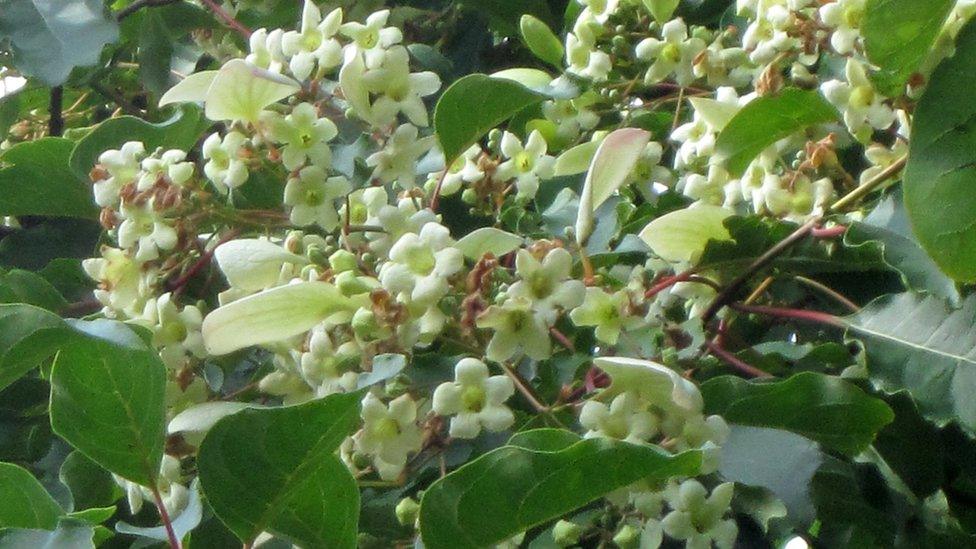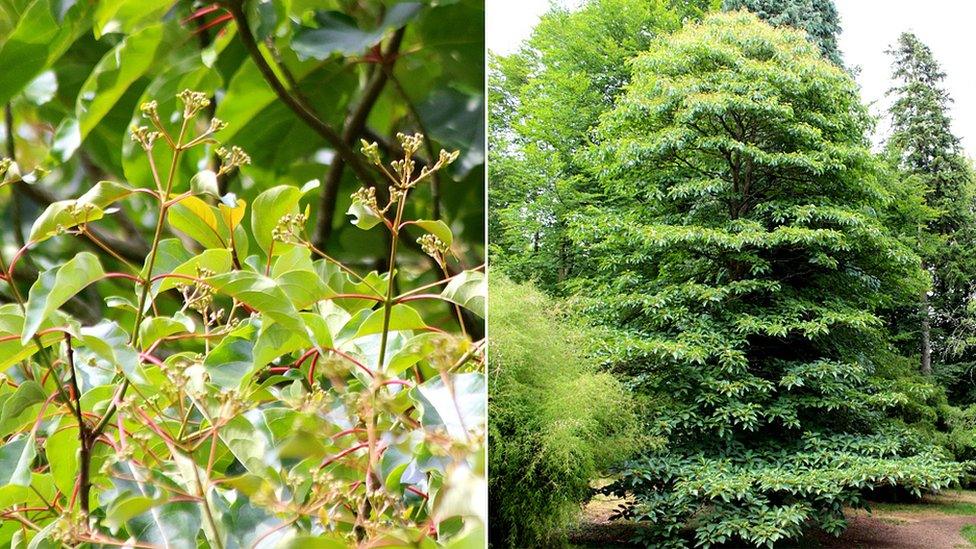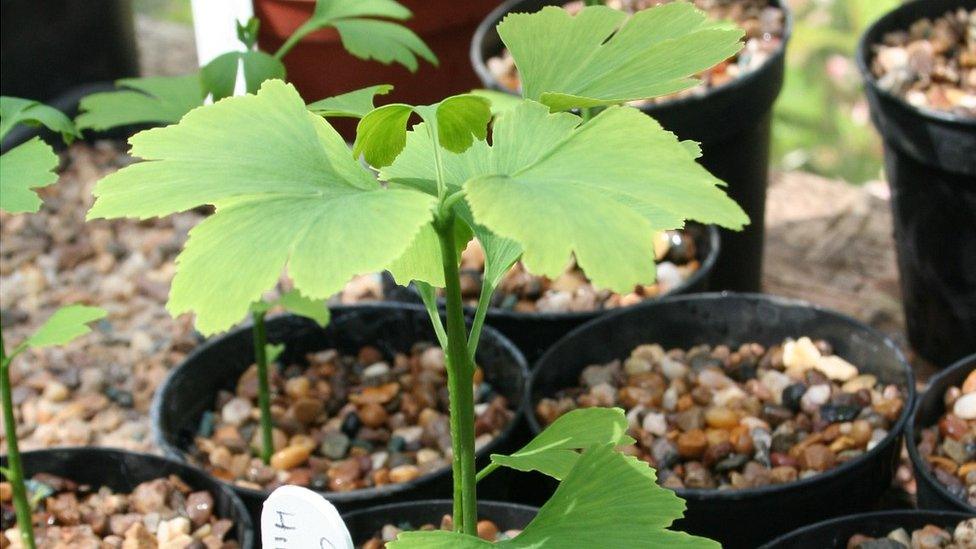'Heat wave' ends 25-year wait for rare tree bloom
- Published

Specimens have previously flowered at Borde Hill in Sussex and at Cambridge University Botanic Garden
A rare Chinese tree is coming into flower for the first time in a quarter of a century in Gloucestershire.
The emmenopterys henryi at Batsford Arboretum is one of only a handful to have blossomed in England since it was introduced to the country in 1907.
It is thought the extreme weather of 2018 may have triggered flowering.
Head gardener Matthew Hall, said: "I've looked at this tree for so many years and I didn't believe it. I've never seen one in flower, it's unbelievable."
The first recorded flowering of the tree anywhere in England was at Wakehurst Gardens in West Sussex in 1987 with a 23 year wait before it flowered there again in 2010.
A specimen has also flowered twice at Borde Hill in Sussex and at Cambridge University Botanic Garden.

Batsford's tree - currently in bid - was one of a few taken from botanist Ernest Wilson's original Emmenopterys at Kew Gardens, several years before it died
Mr Hall said the flower buds on the 30ft (9m) tree at Batsford are "developing" and are expected to be in full bloom at the beginning of August.
"I've been keeping a close eye on it but as each year went by, I thought it may never happen," he said.
"But this weather, its been extreme. The trees haven't been enjoying it but the emmenopterys has - it is absolutely perfect."
'Mysterious'
He said he hoped the tree would be in flower for "at least a couple of weeks".
"They are that mysterious, this could be it for 30 years or this might be it's one and only flowering," he said.
The deciduous tree, which belongs to the coffee family, Rubiaceae, is native to central and south-west China.
It was introduced into the UK in 1907 by botanist Ernest Wilson, who was born in nearby Chipping Campden.
The tree was discovered and named after the Irish plant hunter, Augustine Henry, who first discovered it in central China in 1887.
- Published9 August 2015

- Published15 September 2012
.jpg)
- Published27 August 2010